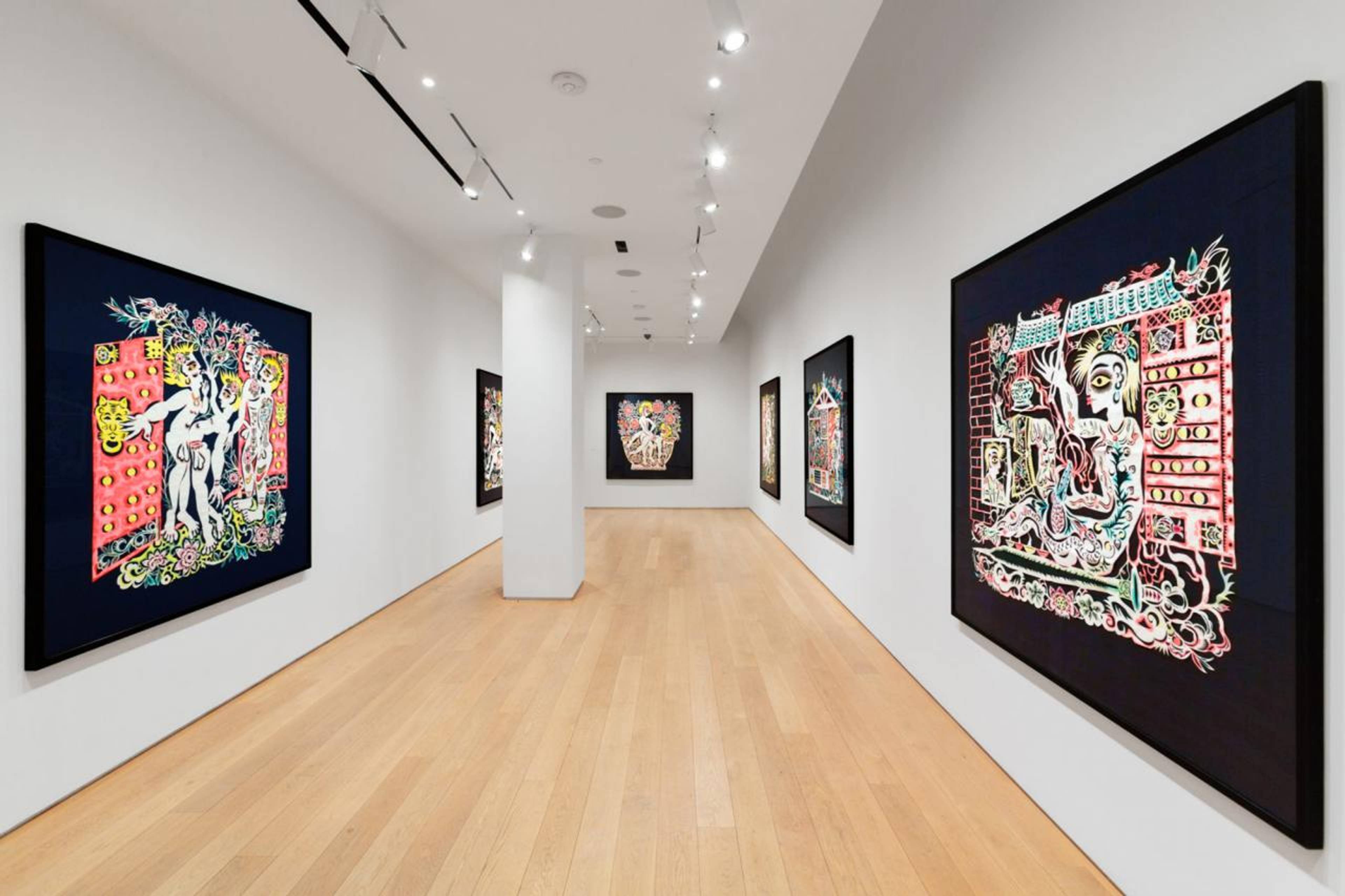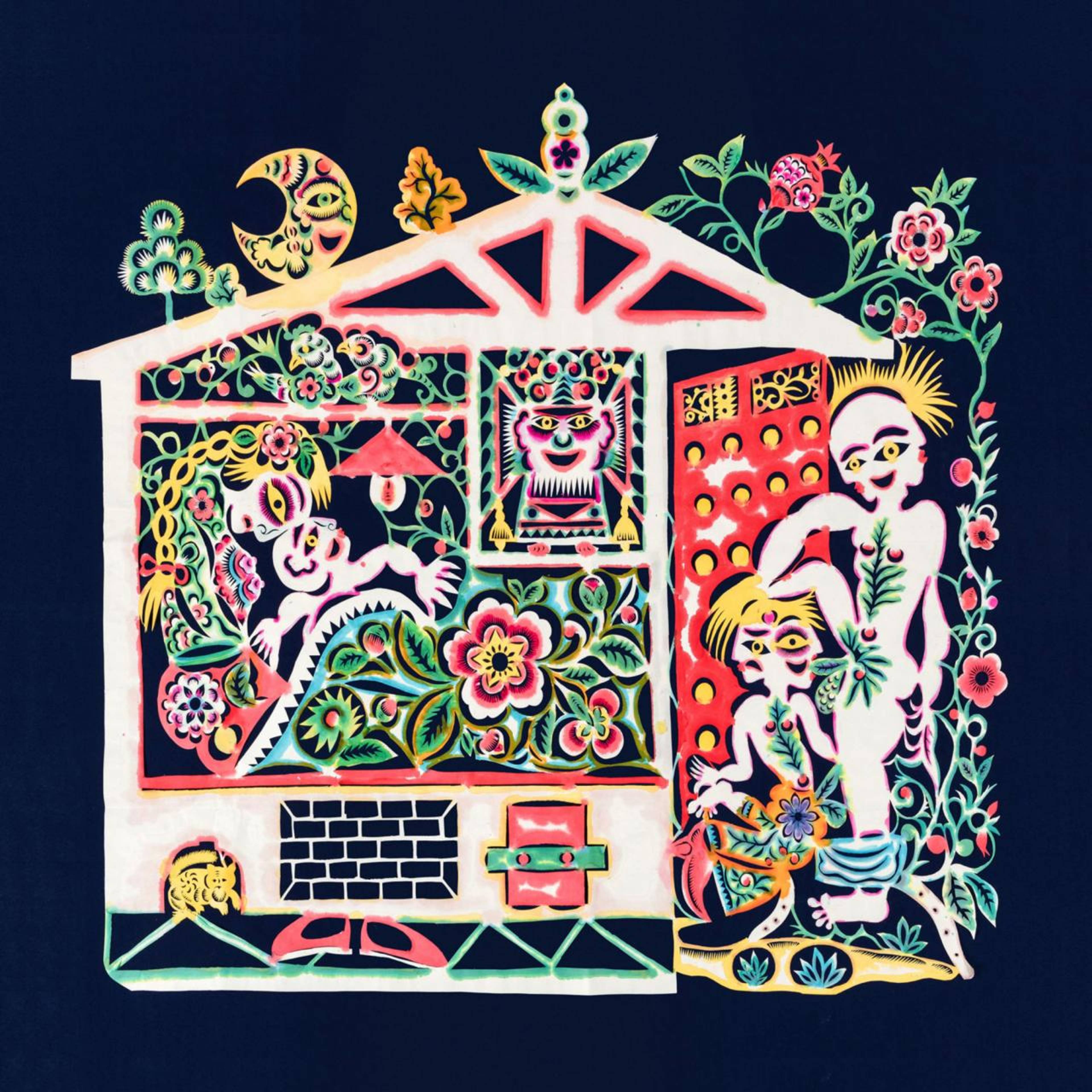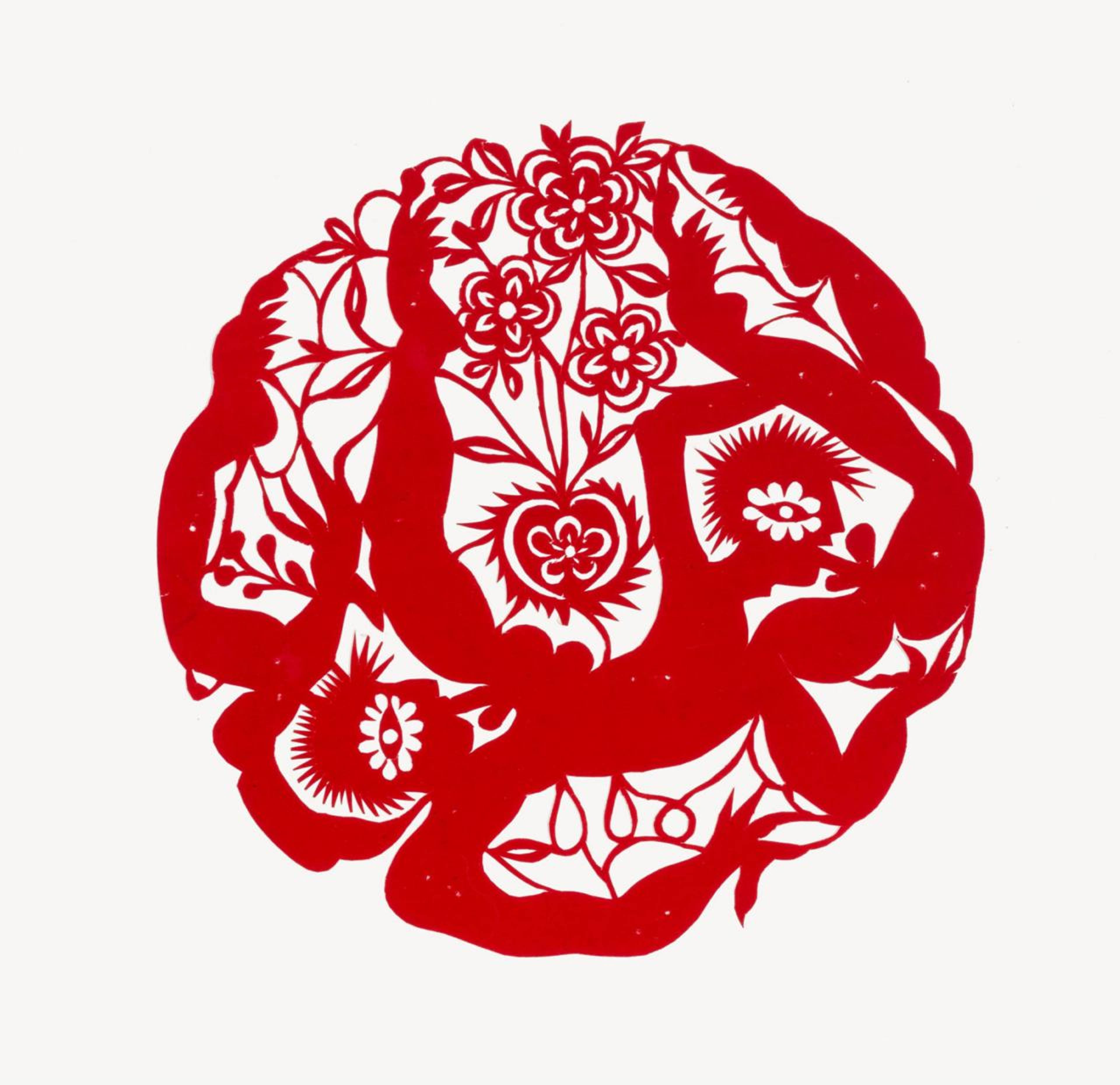As I delved into Xiyadie’s intricate papercuts, vivid memories of the jolt I experienced on first encountering Tom of Finland’s works years ago in “The Pleasure of Play” (2015) at Artists Space – then located just one block away – came flooding back. While both artists author works under pseudonyms and share an affinity for bold and cheerful depictions of male eroticism, Xiyadie’s unique visual lexicon proves that queer desire can fittingly take on Chinese folk-art forms, while standing as a powerful testament to the universality of queer art and its potential to transcend cultural boundaries.
Papercutting, or jianzhi, is an ancient cultural form often associated with feminine craft pursuits and linked to festival and ritual celebrations. Several sheets of paper, usually in shades of red, are fixed together, allowing scissor blades to wander smoothly through their thickness; the resulting images are often directly glued onto windows and doors and feature imagery conveying wishes for prosperity. Xiyadie, who learned papercutting from his mother in Northwest China’s rural Shaanxi Province, retains the fragility and ephemerality of traditional papercuts, qualities accentuated at the Drawing Center, where the works were framed without adhesives or other supports. Traces of wrinkling and curling are movingly evident, much like the gestural marks left by a painter’s brushstrokes on canvas, and they possess a strong sense of suspension as standalone pieces.
View of Xiyadie, “Queer Cut Utopias,” The Drawing Center, New York, 2023
The lineage of jianzhi is one he also subverts. Xiyadie usually produces his major art pieces from white rice paper, which he additionally dyes with the water-based technique pin se. His red papercuts, therefore, tend to be byproducts of a process that yields several formally identical but chromatically distinct cuts, further complicating conventional art-historical notions of originals, editions, and copies. At times, when presented together in catalogs and exhibitions, dyed and red papercuts with the same theme reveal a contrast that goes beyond stylistic differences. Rather, they reflect Xiyadie’s emotional distance from the medium’s heritage and the conservativism that has repressed his own nuanced and inexpressible senses, juxtapositions that contour out a negative space for the artist to inhabit.
Most of the works presented in this show remained unknown to the public until 2010, when Xiyadie first exhibited at the Beijing LGBT Center, five years after relocating to the capital as a migrant worker and finding solace in the gay community there. Dating back to the early 1980s, Xiyadie had used floor panels as partitions to keep his works hidden, storing them in his basement. The artist himself considered his sexual orientation and his creation of gay-pornographic scenes “hooliganism,” a crime under Chinese law from 1979 to 1997, which permeated his early works with a sense of shame, suppression, and struggle. In one of several works titled Gate (1992), Xiyadie candidly expresses his remorse as a gay man who married a woman. The right side of the tableau portrays him engaging in oral sex, while his wife tends to – perhaps breastfeeds – their son on the left. Most of the characters, including the moon, have joyful smiles and upturned lips – with the notable exception of the female figure. Here, Xiyadie’s graphic, anatomical approach, reminiscent of architectural axonometric drawing used to depict ideal lives in modelled spaces, feels rather cruel, as it highlights the mutual isolations of family members living under one roof.
Xiyadie, Kaiyang, 2021. Installation view, The Drawing Center, New York, 2023
The self-portrait Sewn (1999) is likewise a poignant lament, depicting Xiyadie sewing up his penis with a gigantic needle, one leg bent over a row of tacks and attacked by a crawling snake. A photo of his lover, a train conductor (I think again of Tom of Finland’s police-uniformed men), suggests that lovesickness is as unbearable as the taboo surrounding homosexuality. But the helplessness that once engulfed the artist has gradually transformed: His more recent works have extended personal narratives to broader aspects of queerness through the lens of social class in China, as in Kaiyang (2021), a three-meter-long depiction of more than fifty figures in an orgy at the now-shuttered, namesake bathhouse, a “gay paradise” the artist blessed by borrowing one of Tiananmen Square’s Huabiao Columns. His sense of humor has become less restrained, too, as one figure in the shower bends over among several erect men to pick up a bar of soap.
Backdropped by the Chinese government’s recent ban on the portrayal of homosexual romance on national television and the internet, Xiyadie’s fearless expression positions his work as a powerful manifesto for queer love. Among lush, poetic visuals of blooming flowers, footloose mice and birds, and fluttering butterflies – his artist’s name translates to “Siberian Butterfly” – his depictions of sensual joy between same-sex partners counter an assertion that homosexuality is in any way unnatural or that regulation can ever succeed in suppressing it. In doing so, these images work as powerful reminders of the beauty and freedom that can exist amid and beyond societal constraints.
Xiyadie, Gate, 1992, papercut with water-based dye and Chinese pigments on Xuan paper, 140 x 140 cm
Xiyadie, Joy, 1999. papercut with water-based dye and Chinese pigments on Xuan paper, 20 x 20 cm
___
“Queer Cut Utopias”
The Drawing Center
3 Feb – 14 May 2023






